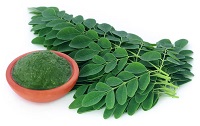Antidiarrhoeal activity of leaf extract of Moringa Oleifera in experimentally induced diarrhoea in rats
Keywords:
enteropooling, hyper secretion, Moringa oleiferaAbstract
To evalauate the antidiarrhoeal activity of the hydroalcoholic extract of moringa oleifera leaves. The hydroalchoholic extract was evaluated using rodent animal models of diarrhoea like the castor oil and magnesium sulfate induced gastrointestinal motility, in a model of enteropooling induced by the administration of castor oil and PGE2, Charcoal meal test. Acute toxicity and phytochemical constituents were also been evaluated using standardized methods. The results of the present study indicates that the hydroalcoholic extract of moringa oleifera leaves was effective in inducing a significant protection against experimentally induced diarrhoea by castor oil and magnesium sulfate, as evidenced by a decrease in the number of frequency, weight of stools after 4 hours with respect to control. The extract also prevented the enteropooling induced by castor oil and PGE2 at all the doses tested. Acute toxicity studies indicated that the extract is safe till 2500 mg/kg. The antidiarrhoeal activity though, not ascribed to any particular phytochemical present, general tests performed indicated the presence of flavonoids, tannis which were reported to produce antidiarrhoeal activity. These results showed that Moringa oleifera leaves possess anti-diarrheal properties mediated through inhibition of hyper secretion and gastrointestinal motility that substantiate its use in the treatment of diarrhea in traditional medicines or folklore use.
References
Fernando C, Ramon A, Halley P. Effect
of plants used in Mexico to treat
gastrointestinal disorders on charcoal gum
acacia induced hyperperistalsis in rats. J
of Ethnopharmacol. 2010;128:49-51.
Robert Horn, Alex Perry and Simon
Robinson. A simple solution. Time.
;42-47.
Hardman JG, Limbard LE. The
Pharmacological Basis of Therapeutics. In
Goodman & Gilman’s; Tenth edition
Newyork: McGraw Hill. 2001;1038.
Jed WF. Moringa oleifera: review of the
medical evidence for its nutritional,
therapeutic and prophylactic properties.
Part1. Trees for life. 2005;1(5).
Ezeamuzie IC, Ambakederimo AW,
Shode FO, Ekwevelm SC. Antiinflammatory effects of Moringa oleifera
root extract. Int j of pharmacog.
;34(3):207-12.
Bharali R, Tabassum J, Azad MRH.
Chemomodulatory effect of Moringa
oleifera, Lam, on hepatic carcinogen
metabolizing enzymes, antioxidant
parameters and skin papillomagenesis in
mice. Asian Pac J of Cancer Prev.
;4:131-39.
Pal SK, Mukherjee PK and Saha BP.
Studies on the antiulcer activity of
Moringa oleifera leaf extract on gastric
ulcer models in rats. Phytotherapy Res.
;9:463-65.
Villasinor IM, Lim-Sylianco CY, Dyrit F.
Mutagens from roasted seeds of Moringa
oleifera. Mutation res. 1989;224(2):209-
Mehta K, Balaraman R, Amin AH, Bafna
PA, Gulati OD. Effects of fruit of
Moringa oleifera on the lipid profile of
normal and hypercholesterolaemic
rabbits. J of Ethnopharmacol. 2003;86(2-
:191-95.
Moussa Ndong, Mariko Uehara, Shin-Ichi
Katsumata, and Kazuharu Suzuki. Effects
of oral administration of Moringa oleifera
lam on glucose tolerance in goto-kiakizaki
and wistar rats. J Clin Biochem Nutr.
;40(3):229–33.
Agrawal Babita, Mehta Anita.
Antiasthmatic activity of Moringa oleifera
Lam: A Clinical Study. 2008;40(1):28-31.
Pari L and Kumar NA. Hepatoprotective
activity of Moringa oleifera on
antitubercular drug-induced liver damage
in rats. J Medi Foods. 2002;5(3):171-77.
Dangi SY, Jolly CI, Narayanan S.
Antihypertensive activity of the total
alkaloids from the leaves of Moringa
oleifera. Pharm Biol. 2002;40(2):144-48.
Kandelwal KR. Practical pharmacognacy.
th ed. Nirali Prakashana editors, Pune.
;149p.
Prema Veeraraghavan. Expert consultant,
CPCSEA, OECD Guideline no. 2000;420.
Dangi SY, Jolly CI, Narayanan S.
Antihypertensive activity of the total
alkaloids from the leaves of Moringa
oleifera. Pharm Biol. 2002;40(2):144-48.
Afroz S, Alamgir M, Khan MTH, Jabbar
S, Nahar N, Choudhuri MSK.
Antidiarrhoeal activity of the ethanol
extract of Paederia foetida Linn.
(Rubiaceae). J of Ethnopharmacol.
;105:125–30.
Mujumdar AM, Misar AV, Upadhye AS.
Antidiarrhoeal activity of ethanol extract
of the bark of Dalbergia lanceolaria. J of
Ethnopharmacol. 2005;102:213–16.
Swati B, Murugesan T, Sanghamitra S,
Kuntal M, Jiaur Rahaman G, Pal M, Saha
BP. Antidiarrhoeal activity of Strychnos
potatorum seed extract in rats. Fitoterapia.
;73:43-47.
Rouf AS, Islam MS, Rahman MT.
Evaluation of antidiarrhoeal activity
Rumex maritimus root. J of
Ethnopharmacol. 2003;84:307-10.
Helmut VA, Paul JT and Sidney FP.
Effect of oleic and ricinoleic acids on net
jejuanal water and electrolyte moment
perfusion studies in man. J of clinic
investigation. 1972;53:374-79.
Opinion of the Scientific Committee on
Food on the Tolerable Upper Intake Level
of Magnesium. European Commission
Health & Consumer Protection
Directorate-General. 2001:1p.
Inayathulla, Shariff WR, Karigar asif A,
Sikarwar Mukesh S. Evaluation of
antidiarrhoeal activity of crateva nurvala
root bark in experimental animals. Int. j of
pharm and pharmaceuti sciences.2010;2.
Dajani E, Roge E, Bertrermann RE.
Effects of E prostaglandins,
dophenoxylate and morphine on intestinal
motility in vitro. Euro j of pharmacol.
;34:105-13.
Mukherjee PK, Saha K, Murugesam T.
Screening of Anti Diarrhoeal Profile of
Some Plant Extract of A Specific Region
of West Bengal, India. J of
Ethnopharmacol. 1998;60:85-89.



